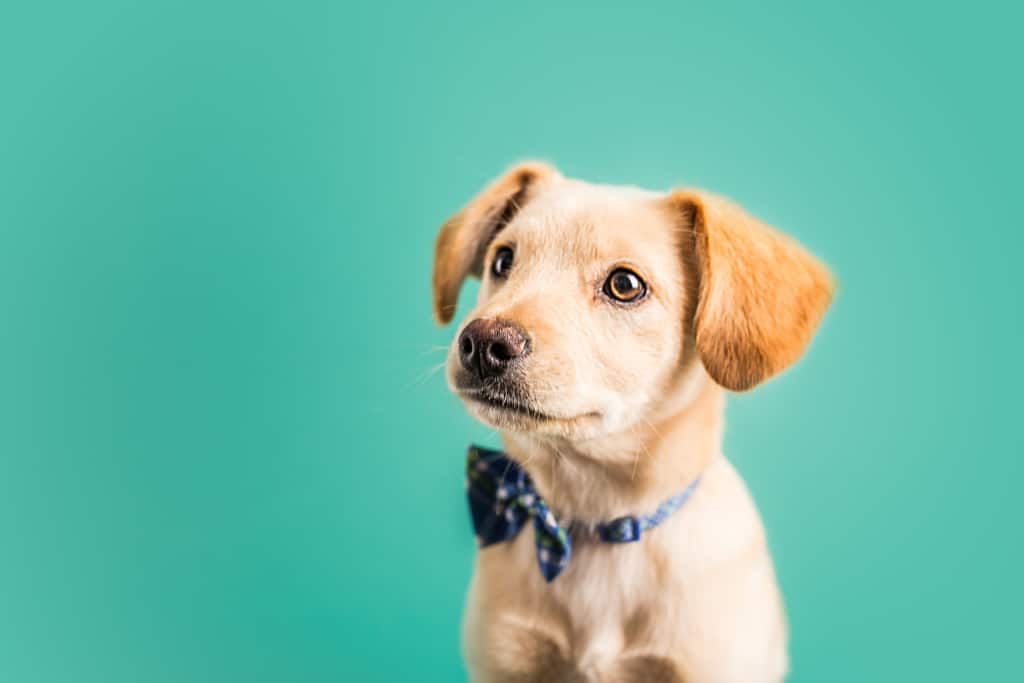
Just like very person is entitled to a high quality of life, animals deserve to live a happy and healthy life. As we make advances in veterinary care and domestic ownership, this has become more possible than ever before. Pet owners have a more nuanced understanding of their pet’s needs, especially when it comes to disabled pets.
Meeting your disabled pet’s needs should extend to every aspect of their life. This includes vital aspects, such as access to food and enrichment, in addition to non-essential elements. Dressing up in costumes for holidays, special parties, play dates, or other events is one example. No dog should be excluded from trick-or-treating or joining in the fun because they’re disabled.
Thankfully, there are plenty of costuming options for dogs with disabilities. No matter what special needs your dog has or how severe they are, you can dress your best friend up and make sure they have a blast.
Types of Disabilities
Not all disabilities are the same and not all dogs are affected in the same way. Just like every person is different, every dog with a disability is slightly different in how they’re affected and how their life may need to change. More often than not, pet owners can’t control their dog’s disability. However, they can make sure they’re properly educated on the subject and are prepared to take care of their furry best friend.
- Mobility. This type of disability limits your dog’s ability to move freely. It can involve your dog missing a leg, having a nonfunctioning (i.e., “lame”) leg, arthritis or joint issues, etc. It essentially means your dog’s movement may be limited. Some dogs are only affected in minor ways, such as having trouble running fast, while others have their daily lives impacted, such as those who are in a pet wheelchair.
- Auditory. Auditory disabilities impact your dog’s ability to hear. Your dog may be deaf, missing internal ear structures, etc. Your dog may not respond to noise at all or may only respond to it in a limited capacity, and their verbal abilities may or may not be affected. It may be extensive, in that they can only respond to visual cues, or only partial.
- Verbal. As the name indicates, verbal disabilities refer to those that affect your dog’s ability to use their vocal chords to communicate. This can present in a variety of ways, from your dog not being able to verbalize at all to your dog only being able to make specific sounds or at specific pitches. It can be related to several different types of root causes, such as genetic birth defects, physical deformities, etc.
- Visual. With visual disabilities, your dog’s ability to see is impaired. Your dog may be blind, have cataracts, be missing an eye, etc. Their vision in either one or both eyes is impaired, leading to a greater reliance on other senses. While plenty of dogs re affected by this disability from birth or an early age, many more develop this disability as they become canine senior citizens.
- Olfactory. Though less common, olfactory disabilities do exist. With this type of disability, your dog isn’t able to smell. They may have trouble smelling or may not be able to use their nose for this purpose at all. Again, this could be related to various different causes, including breed-specific defects or genetic issues. It can also be caused by physical or external events, such as fighting or a chemical reaction.
- Mental. Just like people, there are plenty of dogs that have mental disabilities. These type of disabilities can vary in severity and how much they impact day-to-day life. Depending on the specifics of the disability, owners may be able to combat symptoms with medication or other medical treatment. This type of disability can be present from birth or develop later on in life, either naturally or through trauma.
- Elimination. This type of disability almost always is related to internal and intestinal issues with pets. It involves your pet’s ability to urinate and defecate regularly and without pain. This can be a disability on its own or caused as a result of another disability. For example, spinal injuries that result in paralysis and mobility disabilities often also result in elimination disabilities.
These are just a few of the different types of disabilities that pets can have. There are many more and they are as varied as those that affect humans. Some pets are not impacted by their disabilities at all, while dog’s need every aspect of their life to be altered in order to live a happy and fulfilling life. But no matter the disability, dogs can still participate in everything non-disabled pets and humans can do.
Best Costumes for Disabled Pets
Even if your dog has a disability, they can still participate in everyday activities and festive occasions. Though you’ll probably have to take their disability into consideration and make some minor adjustments to how they participate, there’s no reason your dog can have just as much fun as you. When it comes to costuming, this holds true. You’ll need to make sure the costume you pick out accommodates your dog’s disability rather than further limiting them.
- Walking Costumes. These types of costumes allow your dog to step into them with their front legs. The costume straps around their front and near their neck. It does not go beyond the middle of their back and leaves their tail, hind legs, and rump area free. These types of costumes are good for dogs with elimination or mobility disabilities related to their hind legs. Costumes like this and this are examples of walking costumes.
- Strap-on Costumes. Much like walking costumes, strap-on costumes only affect one major part of a dog’s body: their back. These costumes rest on your dogs back and either strap around their neck or belly. This leaves their legs free. These types of costumes are great for dogs with mobility or sensory disabilities. Costumes like these food outfits and this shark fin costume are examples of strap-on costumes.
- Headgear. Often considered more of an accessory than a costume, headgear are costumes that rest on your dog’s head. They can be part of a larger costume or be a complete look by themselves. They often have a strap that goes under your pet’s chin or clips for your dog’s ears. Dogs with mobility, sensory, and elimination disabilities benefit from these types of costumes. Headgear costumes include wigs, hats, headbands, and single headpiece outfits.
- Neckwear. Just like headgear, neckwear is often considered supplemental to a costume rather than a costume itself. It goes around your pet’s neck and can include bandanas, ties, bowties, etc. Dogs with sensory and mental disabilities do well with neckwear. This spooky bandana, superhero cape, and festive collar are all examples of adorable neckwear.
- Collars and Leads. Collars and leads are everyday items for your pet that can be transcended into fun costume wear. They are examples of an outfit that dogs with all types of disabilities can wear. You can buy a matching collar and lead set or mix it up with different festive combinations. Outfits like this Batman combination and American flag set are example of collars and leads.
No matter what type of disability your dog has, there are costuming options that will allow them to dress up. You and your pet will be able to focus on having fun rather than worrying about their special needs.

What to Consider When Buying a Costume
There are tons of costuming options for dogs with disabilities, as discussed above. However, that doesn’t mean that you can just pick whichever looks cutest and check out. Instead, you should pick out the costume that best accommodates your dog. Choosing the right costume takes several specific considerations, such as:
- Ease of Access. When considering which costume to buy, make sure to consider how easily you can access your dog. Is the costume easy to put on and remove? This is especially important for dogs with physical and sensory disabilities. For example, if your dog has a lame leg, can you easily examine it while your dog is wearing the costume? Or if your dog is visually impaired, can you easily check their eyes?
- Mobility Impediments. Above all, the costume should not further limit your dog. It should be easy to move in, including laying down, getting up, walking, and eating and drinking. If your dog can’t do any one of these and isn’t able to function normally, then it may be time to look for a different costume or nix the outfit idea entirely. Wearing a costume should be fun for your pooch and enrich their lives, not make it harder.
- Fit and Comfort. To ensure your dog has the best experience possible, make sure the costume is as comfortable as possible. Measure your dog carefully and read through sizing guides before purchasing a costume. Besides taking any necessary measurements related to your dog’s disability, the neck, chest, and length are three of the most important measurements. The costume should work with your dog’s disability, not against it.
As long as you take these points into consideration, buying a costume for your dog will be a fun and rewarding experience. Your dog will be able to join in whatever exciting event you have planned. With the right costume, you can accommodate their disability and give them access to all of the joys life has to offer.
More To Explore
Ukrainian traditions of dating
Ukrainian people value a male with chivalry. They take pleasure in it when males welcome them inside and give them a long-stemmed roses on deadlines. Additionally, they value a man who keeps his word and comes to view them. They value lasting connections highly. They do n’t care about hookups or casual dating because they
Dating an Asiatic Girl: Benefits and drawbacks
Many men are unsure of whether or not to deadline an Asiatic woman https://www.audible.fr/pd/Dating-for-Women-Transformational-Dating-Advice-for-Women-Including-How-to-Achieve-Better-Relationships-Effortlessly-Attract-More-Men-Online-Dating-Tips-Tinder-Secrets-to-Boost-Your-Self-Esteem-Livre-Audio/B07KCQ7WYB. Since it depends on whether you’re interested in hookups or want to commit to a partnership, in my opinion. However, it’s best to look for people based on personality, center, shared hobbies, and connectivity instead than ethnicity. Otherwise, you could end
